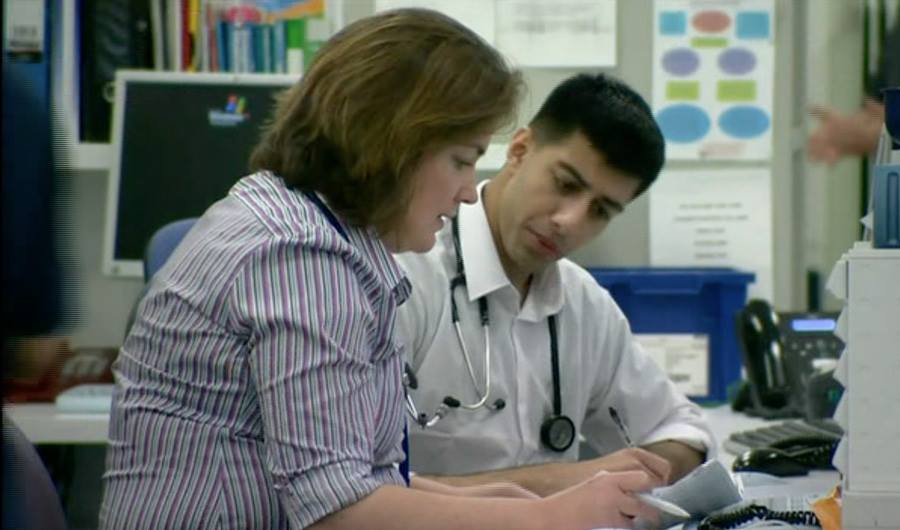
October 27, 2021, by mszrm4
Teaching in the clinical workplace
Dr Cooper reflects on her experiences of teaching in acute medicine.
The word doctor has its origins in the Latin verb ‘docēre’ which means ‘to teach’ – from the Middle Ages when universities awarded the first doctorates. Nowadays, the title is used by qualified medical professionals as well – which is apt, because teaching is a core part of medical practice, and our regulator (the General Medical Council) has a lot to say about teaching.
Teaching can be defined as ‘making specific interventions to help people learn.’ Hold on to that because it’s important to understand that teaching and learning are not the same thing:
Learning – noun. The acquisition of knowledge or skills through study, experience, or being taught. Anything that improves learner outcomes
When I first became a consultant many years ago now, there was pretty much only one thing that bothered me and which I reflected on the most, and that was the morning ward round on our Acute Medical Unit. I felt under great pressure to teach the many different learners present – from medical students to new graduates to higher specialist trainees. I felt under pressure to … perform. So I went to see an educator friend of mine to think things through. When it dawned on me that the job of a teacher is to facilitate learning, that changed everything.
I later summarised what I learned for the Royal College of Physicians in their Acute Care Toolkit no 5: Teaching on the Acute Medical Unit. (I wanted to call it ‘teaching and learning on the Acute Medical Unit for obvious reasons, but that title was deemed to be too long). You can read the whole thing here, along with the RCP’s later report, ‘Too busy to learn’.
In a nutshell, clinicians often have to diagnose and manage learners while simultaneously diagnosing and managing patients. As a result, surveys show that many consultants feel ‘too busy to teach’. However, this apparent conflict can be overcome when individuals, and departments, focus on learning instead of teaching. How can this be done?
First, pay attention to the architecture and the environment. The architecture consists of simple things like rota design/staffing levels, office space, somewhere to put your bag, go for a break, and a good induction which includes an education induction (‘how learning happens here’).
Second, faculty should be trained in simple techniques that explicitly facilitate workplace learning. These include simple things like generating questions and getting some of the team to research the answer for 15 minutes (e.g. ‘What’s the correct way to investigate and treat iron deficiency anaemia?’). Another one is getting a trainee to review a patient first, decide what the problems are and the management plan, then provide feedback (warning: you should read Hattie & Timperley for an evidence-based review of feedback first!) Make the fact that learning is happening explicit.
Third, when you do teach, teach in bite-sized chunks. The one-minute preceptor model is a good example; one-to-one ten-minute tutorials using a pen and paper are another.
Clinicians are good at explaining things, so we default to that naturally. But explaining is not the same as teaching, and teaching is not the same as learning.
In summary, think ‘How can I make learning happen?’ instead of ‘How can I teach?’ It requires some planning, but it’s ultimately less work for the clinician-teacher and more effective in terms of learning. Clinicians are good at explaining things, so we default to that naturally. But explaining is not the same as teaching, and teaching is not the same as learning. And we are, after all, ultimately interested in learning.
Dr Nicola Cooper is a Consultant in Acute Internal Medicine and Clinical Associate Professor in Medical Education
Dr Cooper is module convener for “Principles and Practice of Teaching and Learning” and “Teaching Clinical Reasoning using Case-Based Learning in Educational and Clinical Environments”
Join us on the Nottingham MedEd course: https://www.nottingham.ac.uk/pgstudy/course/taught/medical-education-mmedsci
Read more:
Hattie J & Timperley. The power of feedback. Review of Educational Research. 2007; 77(1): 81-112. Link to article about feedback
Hattie & Timperley’s feedback model is summarised in this YouTube video: Link to YouTube video about feedback
The one-minute preceptor is first described in this article: Neher J , Gordon K , Meyer B and Stevens N ( 1992 ) A five – step ‘ microskills ’ model of clinical teaching . Journal of the American Board of Family Practice . 5 : 419 – 24. Link to article about the one-minute preceptor
Link to a YouTube demonstration video about the one-minute preceptor model

I’ll be the first to comment on my own blog here!
‘Getting a trainee to review a patient first, decide what the problems are and the management plan, then provide feedback’ is a great technique but comes with a warning … Holmboe writes about how trainees have well documented deficiencies in their history taking and physical examination skills and that they are rarely observed by faculty. Faculty take what trainees say ‘at face value’ – which is a problem. It’s important that you go back together to see the patient so that you can verify that what the trainee found is actually correct (this can depend on the level of the learner, your knowledge of them, and the complexity of the case) – this is really important for both learning and patient care.